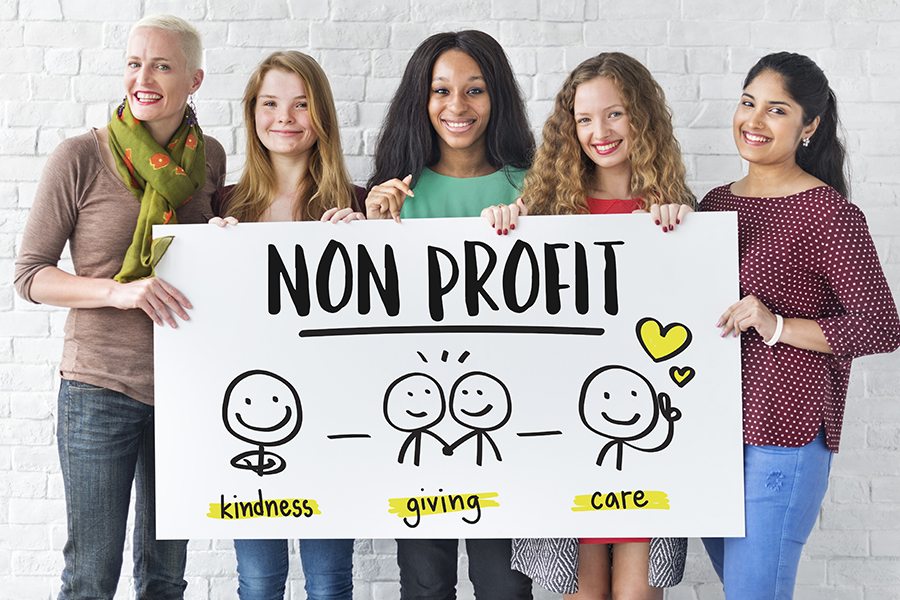The Importance of Collaboration and Partnership for a Nonprofit Agency in Maximizing Resources and Enhancing Community Engagement
In the realm of nonprofit agencies, collaboration and partnership emerge as crucial systems for promoting and amplifying resources neighborhood involvement. By purposefully engaging with various other organizations, nonprofits can take advantage of shared know-how and financial backing, consequently attending to complicated social obstacles much more expertly. Furthermore, these alliances not only improve program efficiency but also grow a much deeper sense of neighborhood participation and ownership. Yet, the true possibility of these collaborative initiatives usually continues to be untapped, questioning concerning how ideal to navigate collaborations for ideal influence and continual success. What elements contribute to the performance of these cooperations?
Advantages of Collaboration

Furthermore, collaboration cultivates innovation by encouraging the exchange of ideas and finest methods. When organizations collaborate, they can check out diverse viewpoints, causing creative solutions that might not arise alone. This shared problem-solving approach can eventually boost solution shipment and program results.
Additionally, collaborative efforts can enhance community engagement. When nonprofits partner with each other, they can mobilize more comprehensive support from stakeholders, including volunteers, benefactors, and community participants. This cumulative engagement not only enhances presence but additionally enhances the reliability of the participating organizations.
Structure Strategic Collaborations
Collaboration amongst not-for-profit agencies usually causes the development of calculated partnerships, which are essential for making the most of effect and accomplishing common objectives. These collaborations allow companies to utilize each various other's toughness, boosting solution distribution and increasing outreach. By straightening objectives and missions, nonprofits can create a synergistic result that amplifies their reach and effectiveness within the area.
Structure critical collaborations calls for mindful preparation and shared understanding. Organizations should initially identify prospective companions that share comparable values and objectives, making sure compatibility in objective and vision. Developing open lines of interaction fosters depend on, allowing companions to talk about sources, responsibilities, and expectations transparently. Collaborative initiatives and routine conferences can help preserve energy and address challenges proactively.
In addition, plainly specified roles and duties are important for responsibility and success. Formalizing the collaboration with created contracts can give a framework for collaboration, detailing the scope of job, efficiency metrics, and assessment techniques. By cultivating these strategic partnerships, nonprofit companies can improve their ability to address community needs, innovate services, and activate resources properly, inevitably bring about a more lasting and substantial impact in the communities they serve.
Sharing Resources Successfully
Just how can not-for-profit agencies maximize their impact with reliable resource sharing? By strategically teaming up with various other companies, nonprofits can enhance their functional performance and extend their reach within the area. Resource sharing includes merging numerous assets, consisting of funds, workers, expertise, and centers, to address common goals much more successfully.

Additionally, leveraging each other's staminas can cultivate innovation. By exchanging expertise and ideal practices, firms can enhance service distribution and develop new services to neighborhood difficulties. Efficient resource sharing also cultivates a feeling of unity, enhancing the concept that partnership is crucial for attaining substantial social influence.
Involving the Neighborhood
What approaches can not-for-profit companies utilize to efficiently engage their areas? First and leading, developing open lines of communication is essential. Utilizing various systems, such as social media sites, e-newsletters, and community discussion forums, permits companies to share info, get responses, and foster discussion. This two-way communication not just educates the area about the firm's mission and tasks however additionally invites input, making area members feel valued and entailed.
Additionally, creating collaborations with regional organizations can boost outreach efforts. nonprofit agency. Teaming up with schools, services, and various other nonprofits can magnify sources and produce an extra substantial assistance network, permitting for joint efforts that resonate with neighborhood needs
Additionally, organizing neighborhood events, workshops, and volunteer chances can help with much deeper involvement. These activities produce a feeling of belonging and urge active engagement, allowing people to contribute to the firm's goals while building partnerships with fellow neighborhood participants.
Determining Collective Success
Examining the efficiency of collaborative initiatives is crucial for not-for-profit companies seeking address to maximize their influence. Gauging collective success includes establishing clear, quantifiable purposes and making use of a variety of metrics to analyze efficiency. Trick signs may include the number of partnerships created, sources shared, and the tangible outcomes accomplished with cooperation.
To efficiently determine success, nonprofits need to execute a structure that includes both qualitative and quantitative data. Interviews and studies can give insights into stakeholder satisfaction and the viewed value of collaborations. In addition, tracking metrics such as service reach, neighborhood involvement levels, and monetary efficiency can offer a thorough sight of collaborative performance.
Normal assessments should be conducted to identify locations of improvement and ideal techniques. This iterative procedure not just enhances liability yet also promotes a culture of continuous learning within the organization - nonprofit agency. By transparently sharing analysis results with stakeholders and partners, nonprofits can construct and reinforce partnerships trust
Inevitably, determining joint success enables nonprofit firms to fine-tune their approaches, assign resources more efficiently, and boost their mission-driven initiatives, leading to a greater cumulative influence on the neighborhoods they offer.
Verdict

In the world of not-for-profit firms, collaboration and partnership emerge as necessary devices for magnifying resources and fostering community interaction - nonprofit agency. By fostering these calculated alliances, not-for-profit firms can boost their ability to attend to community demands, innovate remedies, and set in motion sources successfully, ultimately leading to an extra substantial and sustainable influence in the communities they offer
By strategically collaborating with various other organizations, nonprofits can enhance their operational efficiency and expand their reach within the area.What methods can nonprofit agencies employ to successfully engage their communities?Cooperation and collaboration stand as important pillars for not-for-profit firms intending to make best use of resources and improve neighborhood involvement.
Comments on “Nonprofit Firm: Comprehensive Services to Support Charities and Organizations”